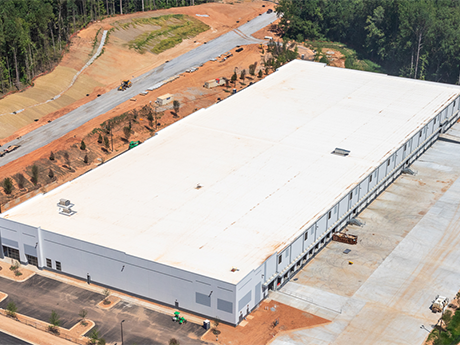Atlanta’s industrial sector and its historically strong performance have fortified the city as a strategic Southeast location and gateway market nationwide. Activity, which has decreased since peak demand during the COVID-19 pandemic, is now returning to normalized levels. The net new requirement pipeline remains robust primarily due to the influx of manufacturing, advanced manufacturing, life sciences, automotive, alternative energy and data center projects.

How owners and tenants invest in industrial properties has also shifted. Owners are seeking properties with short weighted average lease terms and investments below replacement cost. Meanwhile, occupiers are making moves to crisis-proof their networks with onshoring and nearshoring of production that was previously conducted overseas, and they’re adjusting their overall supply chain and logistics strategies to diversify and avoid dependence on one region or vendor.
Players in the market remain cautiously optimistic, which has subdued demand, but that is expected to be short-lived once macro-economic conditions stabilize. High inflation and rising interest rates over the past 12 to 18 months have significantly contributed to decreased demand in Atlanta. However, with continued population growth and Atlanta’s central location in the Southeast, the metro area’s compressed demand will be short-lived.
With that said, Atlanta’s industrial market remains strong with an overall vacancy rate of 4.7 percent and higher asking rents of $7.17 per square foot at the conclusion of the second quarter of this year. New leasing activity is expected to stabilize and strong rent growth will continue in some submarkets but likely flatten in others for the remainder of the year.
A return to industrial real estate fundamentals has already been realized with greater emphasis on location and well-designed, functional buildings. OA Development’s latest Victory Landing Logistics Center in Atlanta is an ideal example.
The 700,000-square-foot industrial park is well-positioned adjacent to Hartsfield-Jackson Atlanta International Airport. Buildings 100 and 500 are complete at this uber-infill location with immediate access to I-285. When fully developed, the five-building, last mile industrial park will offer buildings ranging from 68,000 to 220,000 square feet that are tailored to meet tenants’ demands.
Another unique demand trend emerging is a shift in the size of users taking space in the market. Smaller tenant profiles are much more active than larger, bulk users that occupy 500,000 square feet or more. This is underscored by rent increases for occupiers of 250,000 square feet or less. Over the past 12 months, deals below 250,000 square feet accounted for 94.4 percent of all new lease transactions and represented 53 percent of the total square footage leased.
While market fundamentals continue to support industrial properties that have come to market or are in Atlanta’s pipeline, the cost of capital and the borrowing environment have halted new construction starts and are expected to continue to suppress construction through the first half of 2024.
High construction costs are also forcing tenants to request larger tenant improvement (TI) allowances to upfit their spaces. Even basic build-out costs are burdensome for new construction on smaller footprints, which are the majority of recent deals. In exchange for additional TI dollars, landlords prefer a long-term lease and good credit profile.
Overall, Atlanta’s industrial market is expected to see net new demand for the remainder of 2023 into 2024. The market is also expected to stabilize and benefit from its diversified economy.
— By Lisa Pittman, Managing Director, Cushman & Wakefield. This article was originally published in the October 2023 issue of Southeast Real Estate Business.


